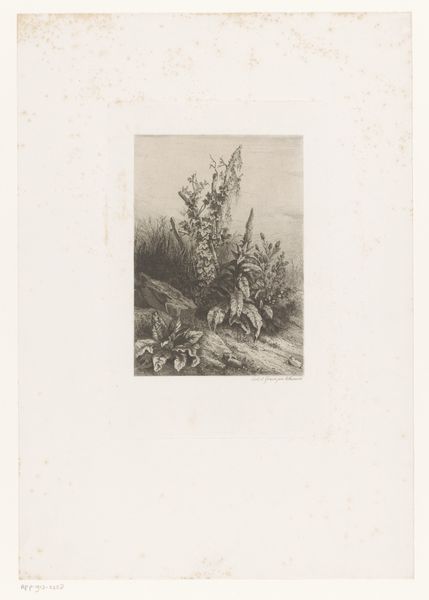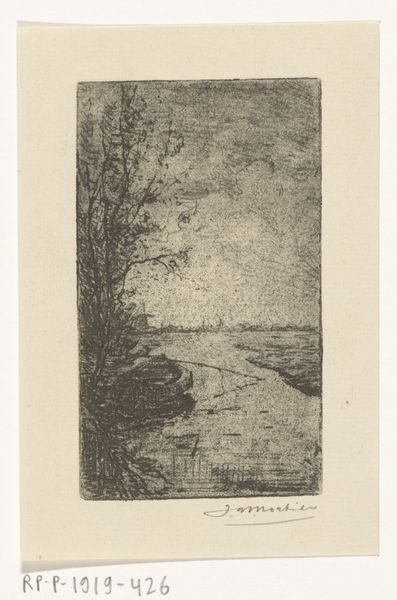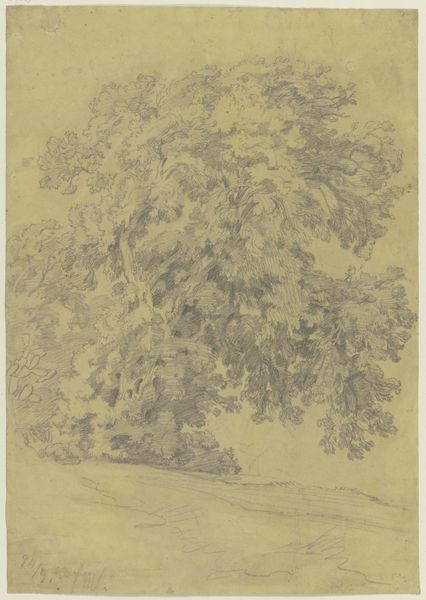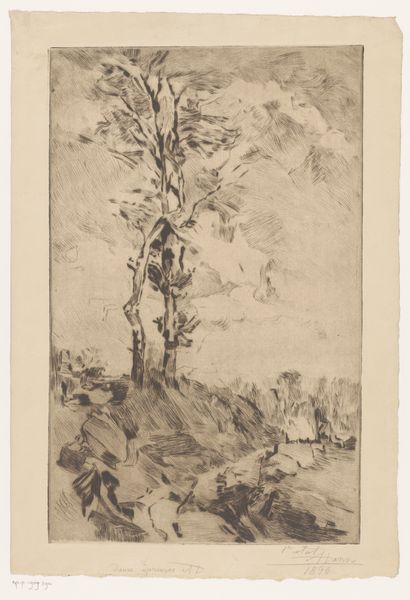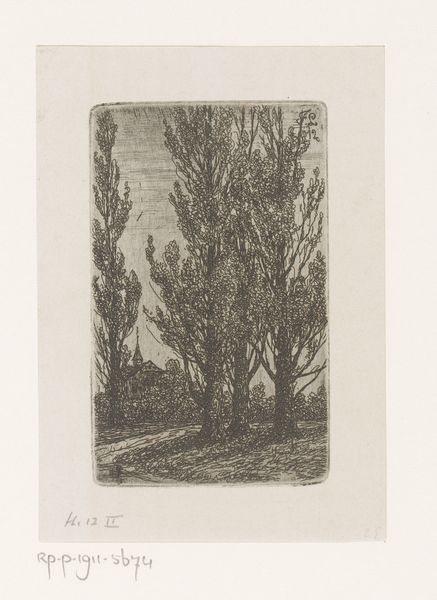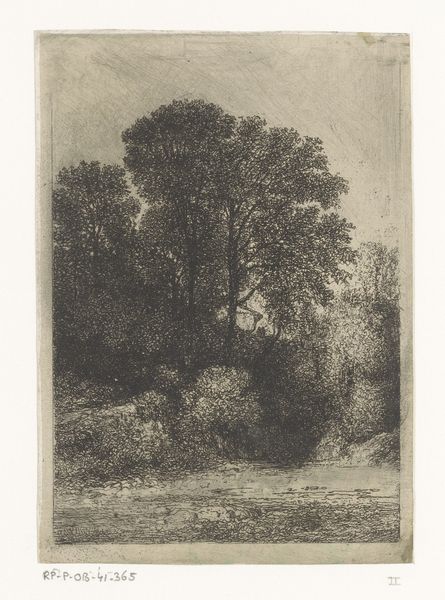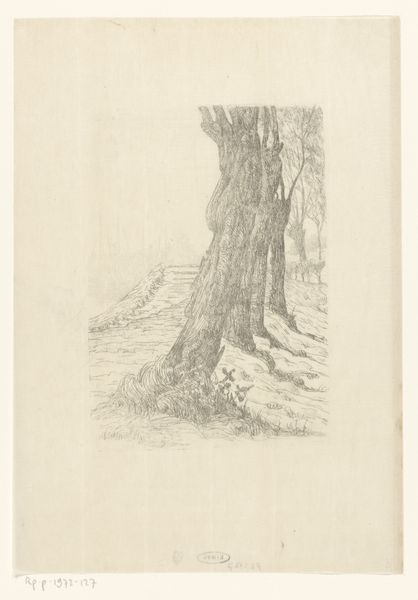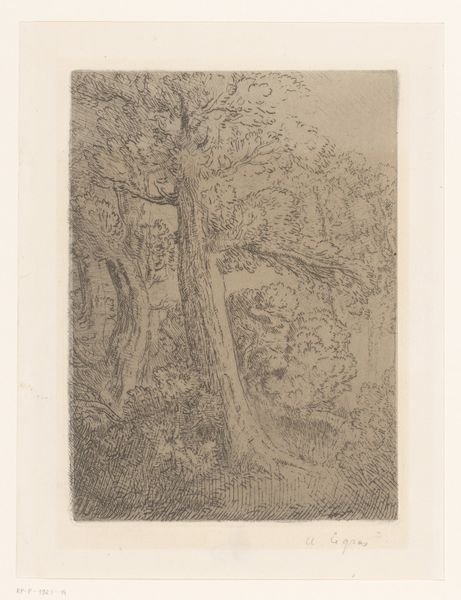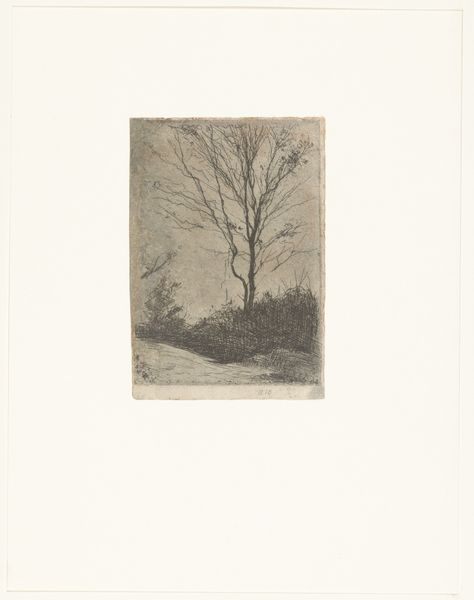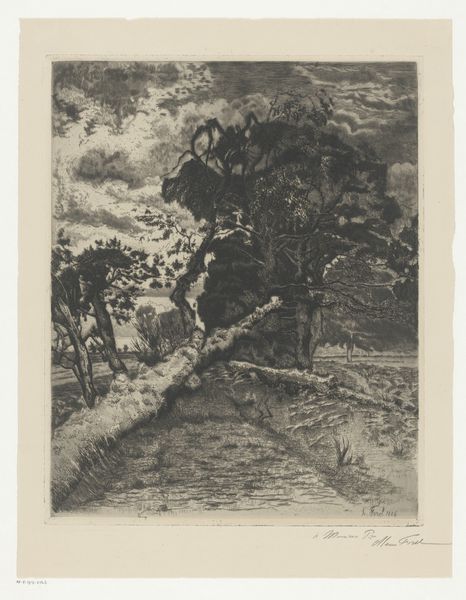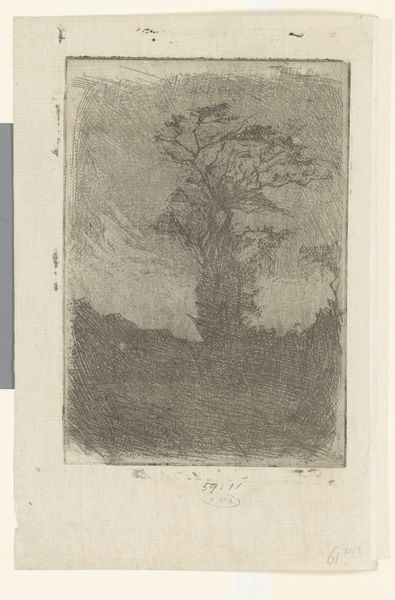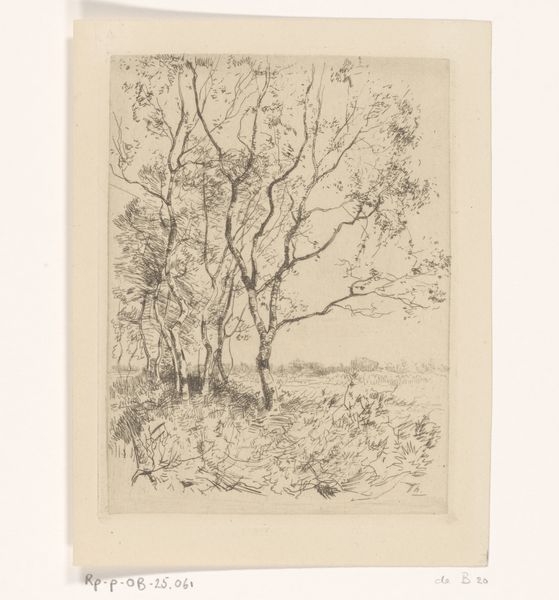
print, etching
# print
#
etching
#
landscape
#
realism
#
monochrome
Dimensions: height 133 mm, width 94 mm
Copyright: Rijks Museum: Open Domain
Curator: This is Hendrik Volmar's "Knotwilg bij het water," created sometime between 1891 and 1921. It's an etching, showcasing a pollard willow near water. Editor: It immediately strikes me as melancholic. That stooped, twisted trunk. It feels burdened, almost anthropomorphic in its weariness. Curator: Yes, and that's amplified, I think, by the monochrome palette. The etching technique allows for such intricate detailing in the tree’s bark, really highlighting its age and, dare I say, resilience. Trees as silent witnesses to time. Editor: Absolutely, trees *are* witnesses. The choice of a pollard willow, specifically, resonates. These trees are repeatedly pruned, their growth deliberately shaped, echoing themes of control, labor, and the manipulation of the natural world. It reflects the Netherlands' constant battle with and careful control of its waterways and landscape. Curator: It also speaks to me of the intimacy Volmar must have felt with this tree, etching allowing such a delicate and close rendering. It makes me consider our relationships with specific, perhaps overlooked, corners of nature. Places, or in this case, a particular tree, we know deeply. Editor: That's a crucial point – whose nature gets represented and how? Volmar presents a seemingly quiet scene, but this landscape is never neutral; it bears the marks of human intervention and tells stories about labor, land ownership, and ecological transformation. The perceived melancholy could be a subtle commentary on the exploitation of resources. Curator: Perhaps, yes. It feels somehow comforting knowing these themes remain as pertinent as they did over a century ago when Volmar was moved to capture this moment. I think his skillful execution encourages a deeper engagement with this scene that might otherwise go unnoticed. Editor: Ultimately, this simple image offers us a chance to meditate on the complex interactions between humanity and the natural world, inviting critical reflections on how landscapes reflect socio-political landscapes.
Comments
No comments
Be the first to comment and join the conversation on the ultimate creative platform.

